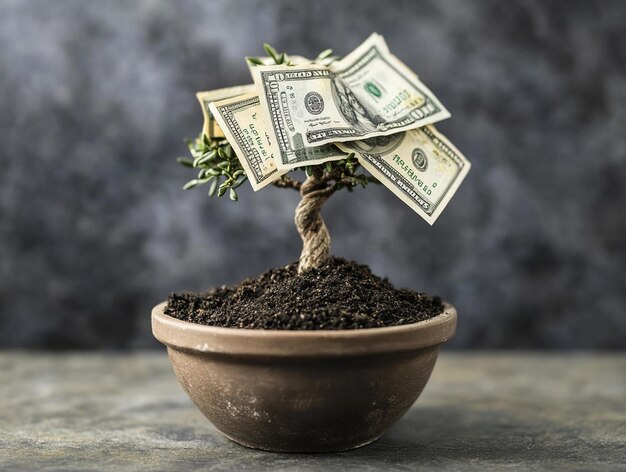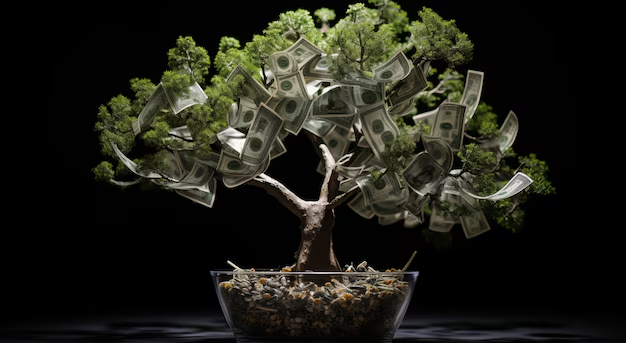As of late, the expression “Seeded Dollar” has arisen as a crucial idea in worldwide money and financial matters. As the world proceeds to advance and wrestle with monetary vulnerabilities, financial backers and countries the same are looking for solid means to settle their economies. One such device is the cultivated dollar, an idea that has gotten some momentum in monetary conversations, especially in business sectors where cash vacillations and expansion are critical worries.
This article investigates the cultivated dollar exhaustively, talking about its set of experiences, job in the worldwide monetary scene, and what it can mean for both public economies and individual financial backers.

What is the Seeded Dollar?
At its center, the cultivated dollar alludes to an essential hold of cash that has been purposely infused into an economy to invigorate development or settle monetary business sectors. The expression “cultivated” implies the deliberate position or mixture of capital, similar as how a rancher sows seeds with at least some expectations of a future gather. In this monetary setting, the objective is to guarantee long haul dependability and development.
This concept is most often associated with central banks and governments that use seeded dolars to control inflation, spur economic activity, or maintain currency value against external pressures. For instance, during times of economic downturn, a central bank might release seeded dolars into circulation to stabilize the market, prevent deflation, or boost consumer confidence.
The Origins of the Seeded Dollar
The idea of the cultivated dollar can be followed back to post-war financial procedures, especially those utilized by the US to remake war-torn countries and settle worldwide business sectors. Programs like the Marshall Plan in the last part of the 1940s went about as early instances of cultivated monetary drives, where the U.S. implanted capital into Europe to modify economies and balance out monetary standards. While this term was not utilized at that point, the fundamental standards intently look like current translations of the cultivated dollar.
In the 21st hundred years, we see the cultivated dollar being applied in various structures, frequently through quantitative facilitating or other financial strategies that expect to infuse liquidity into economies that are in danger of stagnation or downturn.
How the Seeded Dollar Works
The mechanics of the seeded dolar revolve around the idea of controlled and strategic financial injections. When a nation or financial institution uses seeded dolars, it does so with the intent to boost economic activity without triggering runaway inflation or devaluing the currency.
1. Currency Stabilization
One of the primary uses of the seeded dollar is currency stabilization. In markets where currencies are volatile, central banks may introduce seeded dolars to anchor the currency’s value.
2. Stimulating Economic Growth
In the midst of downturn or drowsy monetary development, cultivated dollars can be utilized to advance spending and venture. Governments may inject seeded dolars into infrastructure projects, public services, or other sectors that can generate long-term economic benefits. This stimulus effect can help jumpstart industries, create jobs, and increase consumer spending.
3. Combatting Inflation
Although inflation control is often a delicate balancing act, the judicious use of seeded dolars can help control inflation by increasing liquidity while also regulating demand. When done effectively, it can prevent hyperinflation, which is particularly important in developing countries or those with volatile economic conditions.
The Role of Seeded Dollars in Global Trade
The worldwide economy depends vigorously on monetary standards like the U.S. dollar as a general norm for exchange. The cultivated dollar assumes a basic part in guaranteeing that worldwide exchange can continue without a hitch, particularly in the midst of emergency. By settling the dollar’s worth through essential infusions, states can guarantee that worldwide exchange networks stay functional in any event, during monetary choppiness.
Emerging Markets and Seeded Dollars
For developing business sectors, the cultivated dollar can go about as a help. Many non-industrial countries face difficulties like high expansion, money downgrading, and an absence of unfamiliar speculation. By utilizing cultivated dollars, these nations can settle their money, draw in unfamiliar financial backers, and encourage monetary turn of events. This imbuement of capital permits countries to take on foundation projects, put resources into instruction, and assemble practical businesses.
Seeded Dollars in the Era of Cryptocurrencies
With the ascent of cryptographic forms of money, the scene of worldwide money has moved decisively. Numerous specialists are presently investigating the potential for cultivated computerized monetary standards or stablecoins as a cutting edge cycle of the cultivated dollar. These advanced resources, fixed to the U.S. dollar or other stable monetary forms, offer a better approach to settle showcases and advance financial development, particularly in locales where conventional financial frameworks are lacking.
Cryptographic forms of money like Bitcoin and Ethereum have provoked conversations about the future job of national banks and states in giving cultivated advanced monetary standards. This could reshape how countries interface with the worldwide economy and how they send funding to accomplish solidness and development.
Challenges and Risks of Seeded Dollars
While the advantages of cultivated dollars are clear, there are additionally huge dangers implied. For example, over-dependence on cultivated dollars can prompt long haul obligation issues, inflationary tensions, and decreased financial backer certainty. Additionally, if not managed carefully, the injection of seeded dolars into an economy can create market distortions that result in asset bubbles or unsustainable economic growth.
Conclusion: The Future of the Seeded Dollar
The cultivated dollar stays an integral asset in present day monetary strategy, offering countries and monetary establishments a method for settling and develop their economies during times of vulnerability. As worldwide business sectors develop, the cultivated dollar will probably keep on assuming a basic part, particularly as new monetary innovations and computerized monetary standards arise.

Financial backers, policymakers, and market analysts should stay cautious about how cultivated dollars are conveyed, guaranteeing that this apparatus is utilized admirably to advance reasonable monetary development.
In a universe of monetary vulnerability, the cultivated dollar remains as a signal of strength, gave it is utilized foreknowledge and obligation.
Frequently Asked Questions (FAQs)
1. What is a seeded dollar?
A cultivated dollar is an essential infusion of money into an economy to balance out business sectors, control expansion, or advance financial development.
2. How does the seeded dollar affect inflation?
When used effectively, the seeded dolar can help regulate inflation by increasing liquidity while controlling demand, preventing hyperinflation.
3. What role does the seeded dollar play in global trade?
The seeded dolar helps stabilize the currency used in international trade, ensuring smooth transactions and protecting economies from external shocks.
4. Can cryptocurrencies serve as seeded dollars?
Yes, digital currencies or stablecoins can function similarly to seeded dolars, providing market stability and facilitating economic growth.
5. What are the risks of using seeded dollars?
The risks include potential inflation, debt accumulation, market distortions, and reduced investor confidence if not managed carefully.



[…] speed world, room installations are urgent in making a safe-haven of harmony and extravagance. The Fashion Bed Group 床 stands proudly as a pacesetter supplying elegant and practical bedroom solutions. This […]
[…] contemporary aggressive marketplace, pro plus dlx sl2p hh ht – tr blk finding the right product that offers both premium performance and durability is […]
[…] it comes to selecting the right guitar, the Pro Plus DLX SL2P HH HT – NAT is a model that sticks out amongst others for its extremely […]